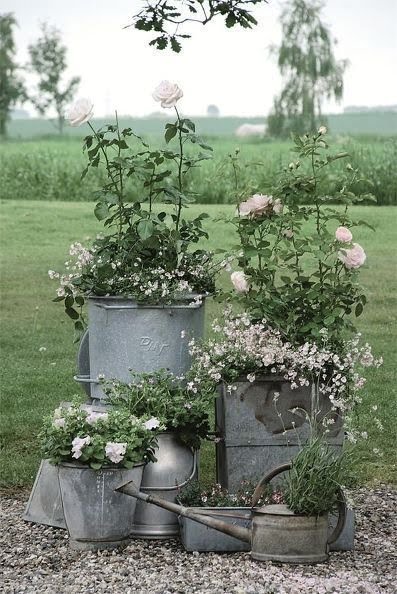Gardening landscape ideas play a crucial role in transforming an ordinary outdoor space into a stunning and inviting landscape. The way a garden is designed and maintained can greatly impact the overall aesthetics of a property, creating an inviting environment that enhances the beauty of the surroundings. From planning and selecting the right plants to incorporating focal points and hardscaping elements, there are many aspects to consider when creating a garden landscape that is both visually appealing and functional.
When it comes to gardening, the possibilities are endless. Not only does it contribute to the beauty of a property, but it also provides numerous benefits such as improving air quality, reducing stress, and promoting physical activity. Whether you have a large backyard or a small balcony, with proper planning and maintenance, you can create a beautiful garden landscape that adds value to your home while providing a peaceful sanctuary for relaxation.
In this article, we will explore the importance of gardening in landscaping as well as provide valuable tips for planning your garden, choosing the right plants, creating focal points, designing pathways and walkways, incorporating hardscaping elements, maintaining your garden, and seasonal gardening ideas. With these insights and ideas, you can take your gardening landscape to new heights and enjoy the beauty of nature right at your doorstep.
Planning Your Garden
When it comes to creating a beautiful garden landscape, proper planning is essential. One of the first steps in planning your garden is assessing the space available. Take note of any existing features such as trees, structures, or natural elements that you want to incorporate into your design. Consider how you want to use the space – whether it’s for entertaining, relaxation, or growing fruits and vegetables. This will help determine the layout and functionality of your garden.
Once you have a good understanding of your space, it’s important to identify the type of soil you have. The composition of your soil will dictate which plants will thrive in your garden and which ones may struggle. Conduct a simple soil test to determine its pH level and nutrient content. This will help guide you in selecting the right plants and flowers that are well-suited for your specific soil conditions.
Lastly, take into consideration the climate of your region. Different plants have different temperature and sunlight requirements, so it’s crucial to choose varieties that are suitable for your particular climate. Research which plants are native to your area or consult with local gardening experts for recommendations on what will grow best in your region.
By carefully assessing your space, identifying your soil type, and understanding the climate of your region, you can create a successful garden landscape that will thrive and bring beauty to your outdoor environment.
| Aspect | Tips |
|---|---|
| Assessing Space | Take note of existing features and determine how you want to use the space. |
| Identifying Soil Type | Conduct a soil test to determine pH level and nutrient content. |
| Determining Climate | Research native plants or consult with local experts for climate-appropriate plant selections. |
Choosing the Right Plants
When it comes to creating a stunning garden landscape, choosing the right plants is essential. The key to a successful garden lies in selecting plants, flowers, and trees that will thrive in the specific location, taking into account factors such as climate, soil type, and available sunlight. One of the most important gardening landscape ideas is to assess the conditions of your garden area before choosing which plants to incorporate.
Before you start planting, take the time to evaluate the type of soil in your garden. Different plants have different soil requirements, so it’s crucial to select varieties that will prosper in the existing soil conditions. For example, if you have sandy soil, opt for plants like lavender or sedum that thrive in well-draining soils. On the other hand, if you have clay soil, consider planting species such as daylilies or asters that can tolerate heavier soils.
Climate is another critical factor when it comes to selecting plants for your garden landscape. Consider the average temperatures and weather conditions in your area and choose plant varieties that are well-suited for the local climate. Research different plant hardiness zones to determine which plants are best suited for your region. By selecting plants that are adapted to your specific climate, you’ll increase the likelihood of having a thriving garden with minimal maintenance.
| Soil Type | Recommended Plants |
|---|---|
| Sandy Soil | Lavender, Sedum |
| Clay Soil | Daylilies, Asters |
Creating Focal Points
When it comes to creating a visually stunning garden landscape, incorporating focal points is essential. Focal points draw the eye and add interest and visual appeal to the overall design. From statues and water features to garden structures, there are numerous options for adding focal points to your garden.
One way to incorporate focal points into your garden landscape is by adding statues or sculptures. Whether it’s a classical statue or a modern sculpture, these artistic elements can serve as striking focal points in the garden. Consider placing a statue at the end of a pathway or in an open area where it can be admired from various vantage points.
Water features also make excellent focal points in a garden landscape. From fountains and ponds to waterfalls and streams, the soothing sound of running water can create a tranquil atmosphere while adding visual interest. Water features can be integrated into the design of the garden or stand alone as a central element, depending on the size of the space and personal preference.
In addition to statues and water features, garden structures such as arbors, trellises, and pergolas can also serve as focal points. These architectural elements not only add visual appeal but also provide practical functions such as supporting climbing plants or providing shade. Consider integrating these structures into the design of your garden landscape to create inviting spaces that enhance the overall aesthetics of your outdoor environment.
Designing Pathways and Walkways
When designing a garden landscape, pathways and walkways are essential elements that not only serve a practical purpose but also contribute to the overall aesthetics of the space. There are numerous options for creating pathways and walkways that can enhance the beauty and functionality of a garden. Whether you prefer a formal, structured design or a more natural and winding path, there are several ideas to consider.
Some popular options for pathways and walkways in a garden landscape include:
- Gravel Paths: Gravel paths are versatile and can be used in various garden styles. They provide good drainage, are easy to install, and create a relaxed and informal feel.
- Paved Walkways: For a more formal look, consider using materials such as bricks, pavers, or flagstones to create paved walkways. These materials come in various shapes, sizes, and colors, allowing for a customized design.
- Stepping Stones: Stepping stones are an excellent option for creating a whimsical or natural-looking pathway. They can be placed in grass, gravel, or mulch to add visual interest while allowing for easy navigation through the garden.
In addition to choosing the right materials for your pathways and walkways, it’s important to consider how they will fit into the overall design of the garden landscape. Factors such as the shape of the path, placement of curves or straight lines, and integrating them with existing landscaping features should all be carefully considered when designing pathways and walkways that will enhance the beauty of your garden.
By selecting materials that complement the style of your garden and taking into account how the paths will be used, you can create a harmonious design that adds both practicality and visual appeal to your outdoor space.
Incorporating Hardscaping Elements
Retaining Walls
Retaining walls are an essential hardscaping element that can add both visual interest and functionality to your garden landscape. These structures can help manage soil erosion, create distinct levels within your garden, and even provide a seating area. When incorporating retaining walls into your garden design, it’s important to consider the materials and style that will complement the overall aesthetic of your landscape. Stone, brick, or concrete are popular choices for creating durable and visually appealing retaining walls.
Patios
A well-designed patio can significantly enhance the enjoyment of your outdoor space. Whether you envision a cozy nook for intimate gatherings or a spacious area for entertaining, there are numerous possibilities when it comes to designing a patio that complements your garden landscape.
Consider factors such as the size of the space, the material of the patio surface (such as pavers or natural stone), and any additional features like fire pits or outdoor kitchens to create an inviting and functional outdoor living area.
Decks
For homeowners looking to elevate their garden landscape with a versatile outdoor space, adding a deck may be an ideal choice. Decks offer a seamless transition from indoor to outdoor living while providing ample opportunities for relaxation and entertainment.
When planning a deck installation, take into account the layout of your garden, sunlight exposure, and any existing landscaping features that can be integrated into the design. Additionally, selecting low-maintenance materials such as composite decking can ensure longevity and ease of upkeep in your garden landscape.
Incorporating hardscaping elements is a key aspect of creating a cohesive and functional garden landscape. By carefully considering options such as retaining walls, patios, and decks, you can transform your outdoor space into an inviting retreat that reflects your personal style and enhances the natural beauty of your surroundings. Whether you prefer classic elegance or modern simplicity, there are endless gardening landscape ideas to explore when incorporating hardscaping elements into your garden design.
Maintaining the Garden
Watering and Fertilizing
Proper watering and fertilizing are essential for maintaining a healthy garden landscape. It’s important to water your plants regularly, especially during dry spells, to ensure they receive an adequate amount of moisture. The frequency of watering will depend on the type of plants you have and the climate in your area. Additionally, using a high-quality fertilizer can provide essential nutrients to the soil, promoting healthy growth and blooming.
Dealing With Pests and Diseases
Pests and diseases can wreak havoc on a garden if not managed properly. Regularly inspect your plants for any signs of pests or diseases, such as holes in leaves or discoloration. There are various organic and chemical options for controlling pests, such as insecticidal soaps or neem oil. For diseases, proper sanitation practices and removing infected plant parts can help prevent the spread. It’s crucial to address these issues promptly to protect the overall health of your garden landscape.
Pruning and Trimming
Regular pruning and trimming are necessary tasks for maintaining the appearance and health of your garden landscape. Deadheading flowers, trimming overgrown shrubs, and pruning trees can help promote new growth, improve air circulation, and prevent disease. Proper pruning techniques should be followed to ensure that you don’t damage the plant. By keeping up with these maintenance tasks, you can enjoy a well-groomed garden year-round.
By implementing these ongoing maintenance tips into your gardening routine, you can keep your landscape looking vibrant and thriving throughout the seasons. These strategies will contribute to the overall success of your gardening landscape ideas while creating an inviting outdoor space for relaxation and enjoyment.
Seasonal Garden Ideas
In conclusion, creating a beautiful and thriving garden landscape requires careful planning, smart plant choices, and ongoing maintenance. By following the tips and ideas presented in this article, you can design a stunning outdoor space that will enhance the overall aesthetics of your property. From choosing the right plants to incorporating focal points and hardscaping elements, every aspect of your garden landscape plays a role in creating an inviting and visually appealing environment.
One important aspect of gardening landscape ideas is the consideration of seasonal changes. By exploring different gardening landscape ideas for each season, you can ensure that your garden remains beautiful year-round. Whether it’s spring blooms, summer foliage, autumn colors, or winter interest, there are plenty of options to keep your garden looking vibrant no matter the time of year.
Remember, maintaining the garden is key to its long-term success. Regular watering, fertilizing, and pest control are essential tasks that will help your plants thrive throughout the seasons. With thoughtful planning and consistent care, you can create a garden landscape that brings joy and beauty to your outdoor space for years to come. So get inspired by these gardening landscape ideas and start designing your dream garden today.

Welcome to my gardening blog! I am passionate about plants and enjoy sharing my knowledge and experiences with others. In this blog, I will write about everything related to gardening, from tips on how to get started to updates on my own garden projects.





